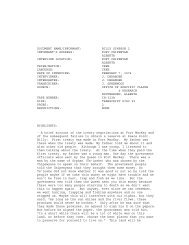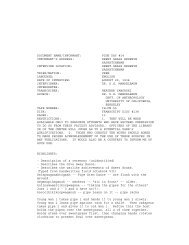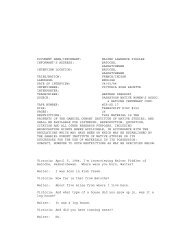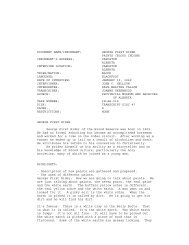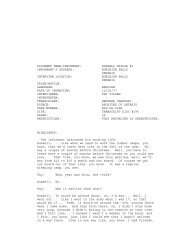Contents of It's not All in Your Head by Asmundson and Taylor
Contents of It's not All in Your Head by Asmundson and Taylor
Contents of It's not All in Your Head by Asmundson and Taylor
Create successful ePaper yourself
Turn your PDF publications into a flip-book with our unique Google optimized e-Paper software.
was no significant change (t = 1.28, df = 9, p = .117); power = .18 [low power]. Affective<br />
subscale scores were also above average at T1 <strong>and</strong> were reduced <strong>by</strong> T3 (t = 2.02, df = 9, p<br />
= .028; power = .48 [low power]). The most robust f<strong>in</strong>d<strong>in</strong>gs were the reductions <strong>in</strong> scores<br />
on the behaviour <strong>and</strong> perception subscales because they had statistical significance <strong>and</strong><br />
sufficient power, unlike the affect subscale. The effect sizes were large for perception (d<br />
= 1.42) <strong>and</strong> behaviour (d = 1.42) <strong>and</strong> small for cognition (d = 0.49) <strong>and</strong> affect (d = 0.44).<br />
Based on the MIHT results, treatment helped participants to decrease their reassurance<br />
seek<strong>in</strong>g from others (behavioural subscale), perceptual-somatic preoccupation with body<br />
sensations (perceptual subscale), <strong>and</strong> worry about health (affective subscale) but the<br />
treatment did <strong>not</strong> change their feel<strong>in</strong>gs <strong>of</strong> alienation due to their beliefs (cognitive<br />
subscale). Reassurance seek<strong>in</strong>g, preoccupation with body sensations, <strong>and</strong> worry may have<br />
changed quickly due to the psychoeducation, behavioural exercises, <strong>and</strong> ERP treatment<br />
components. Participants may have cont<strong>in</strong>ued to feel alienated <strong>by</strong> significant others<br />
because repair<strong>in</strong>g these <strong>in</strong>terpersonal relationships may take longer. The MIHT results<br />
are consistent with the SHAI results <strong>in</strong>dicat<strong>in</strong>g that participants had fewer health anxiety<br />
symptoms after treatment but they had some residual symptoms.<br />
The SHB T1 score on the CES-D was greater than 16, <strong>in</strong>dicat<strong>in</strong>g the presence <strong>of</strong><br />
depressive illness (Radl<strong>of</strong>f, 1997); this was reduced <strong>by</strong> T3 (t = 2.68, df = 9, p = .013;<br />
power = .66 [low power]; see Table 3). This f<strong>in</strong>d<strong>in</strong>g suggests treatment had a positive<br />
effect on participants‘ moods, possibly because <strong>of</strong> the reduction <strong>in</strong> health anxiety<br />
56



